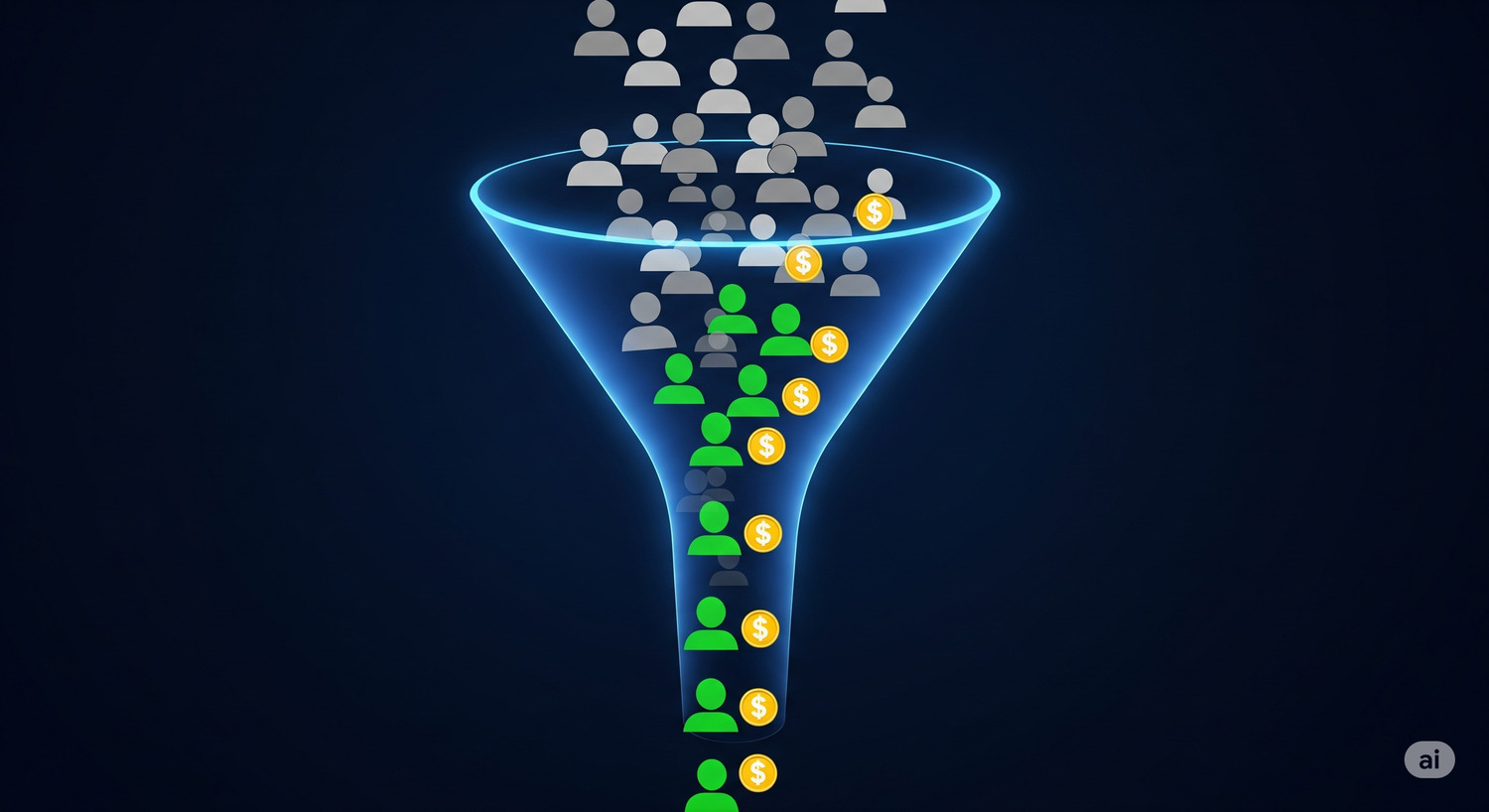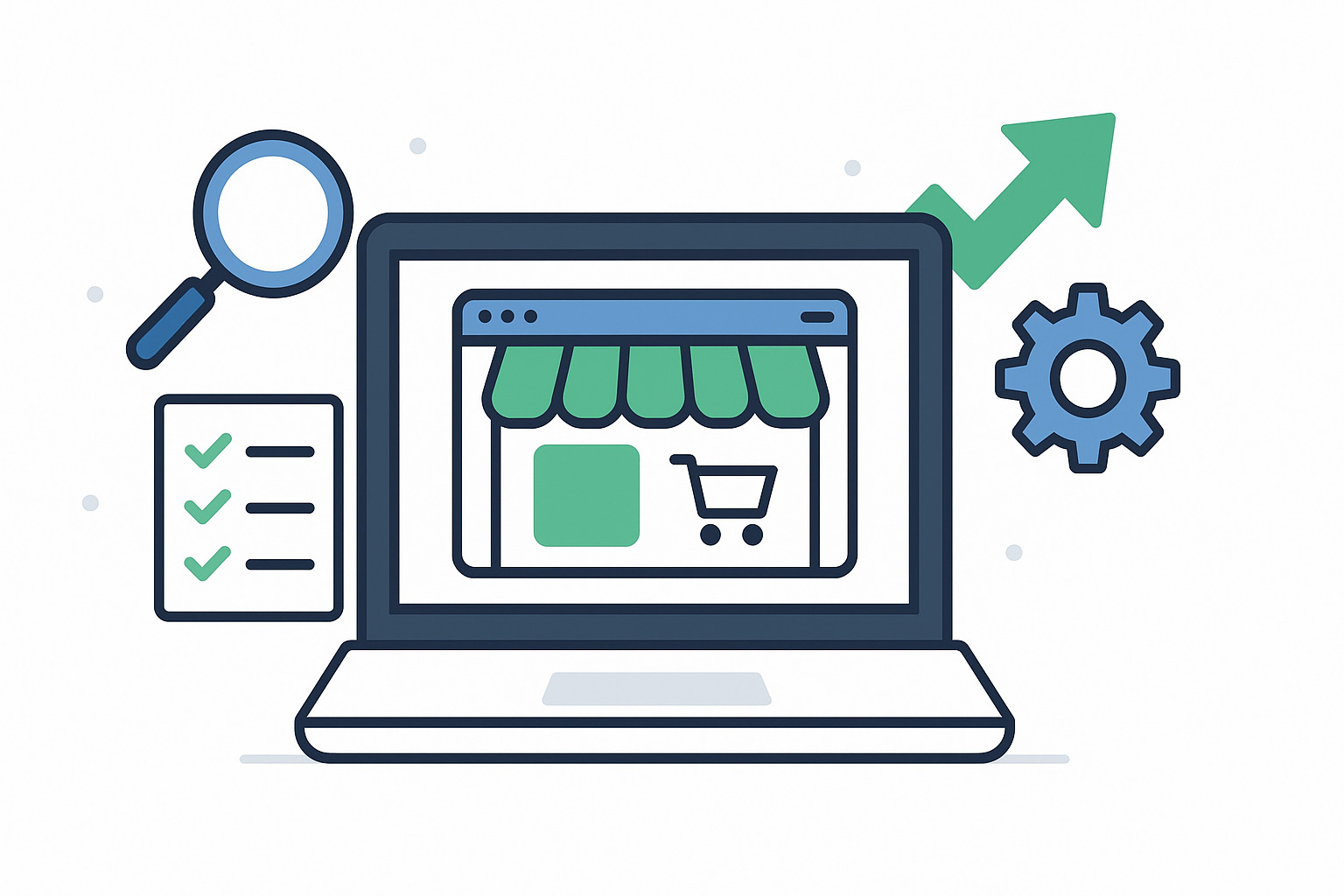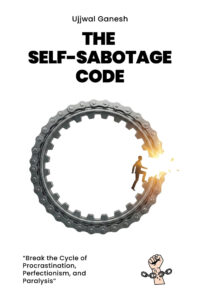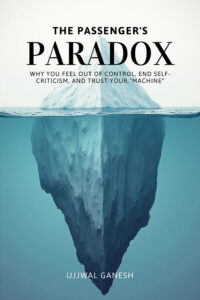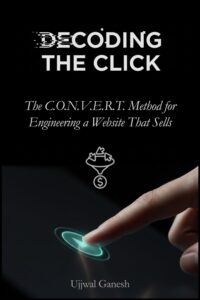Imagine a talented salesperson who warmly greets you, details their amazing products, but then awkwardly stares in silence, never asking for the sale or telling you how to buy. It would be commercial suicide.
Yet, countless businesses do the digital equivalent every day. They build a website, invest in ads, and drive traffic, only to leave visitors stranded on a digital island with no map and no instructions on what to do next.
This failure stems from two silent but deadly killers of business growth: a lack of clear Calls-to-Action (CTAs) and the absence of a structured Conversion Funnel.
The numbers are staggering. A study by Salesforce revealed that 79% of marketing leads are never converted into sales. Unsurprisingly, 68% of the companies in that study had no conversion funnel in place. The link is undeniable. Furthermore, an estimated 70% of small business websites lack a clear Call-to-Action on their homepage.
As a website strategist, I know that turning your website into a profit center requires you to stop leaving conversions to chance. You need to architect a journey that guides every visitor from their first click to the final sale. This is your guide to doing just that.
Part 1: The Anatomy of a Powerful Call-to-Action (CTA)
A Call-to-Action is a prompt that instructs your audience to take a specific, desired action. It’s the “Buy Now,” “Download Your Guide,” or “Get a Free Quote” button that moves a user from passive consumption to active engagement. Without it, you’re having a one-sided conversation.
Many CTAs fail because they are weak, hidden, or uninspired. Here’s how to make yours effective:
- Use Strong, Action-Oriented Verbs: Ditch passive words like “Submit.” Instead, use compelling verbs that create momentum, like “Get,” “Claim,” “Discover,” or “Reserve”.
- Focus on Value, Not Just Action: A user needs to know what’s in it for them. Instead of “Download,” use “Get Your Free E-book”. Instead of “Submit,” try “Get My Free Quote”. This frames the action around the benefit to the user.
- Create Obvious Visual Prominence: Your CTA should be impossible to miss. Design it as a button with a contrasting color that stands out from the page background. Don’t make users hunt for it; a CTA is a gateway, not a game of hide-and-seek.
- Have One Primary Goal Per Page: Don’t paralyze your visitors with too many choices. A case study showed that removing a secondary “Buy Now” button from a landing page increased free trial downloads by nearly 30% because it clarified the single, primary goal.
Part 2: The Blueprint for a High-Converting Funnel
A conversion funnel (also called a sales funnel) is a model for visualizing the customer journey, from their first point of awareness to the final action of purchasing. A well-structured funnel ensures you are delivering the right message to the right person at the right time.
The classic model is AIDA: Attention, Interest, Desire, Action. A more detailed marketing approach divides this into three key stages:
Stage 1: Top of Funnel (TOFU) – Building Awareness
At this stage, your prospects have just become aware of a problem and are looking for answers and education. Your goal is not to make a hard sell, but to build trust and position your brand as an authority.
- Content to Use: Blog posts, articles, checklists, infographics, and introductory e-books.
- Your CTAs Should Be “Soft”: Focus on gathering leads, not forcing sales. Use CTAs like:
- “Download Our Free Guide”
- “Subscribe for Weekly Tips”
- “Get the Free Checklist”
Stage 2: Middle of Funnel (MOFU) – Fostering Desire
Once a visitor becomes a lead, they enter the evaluation phase. They are now comparing your solution against competitors’. Your goal here is to nurture the relationship and prove your value.
- Content to Use: Customer testimonials, in-depth case studies, product webinars, FAQ pages, and demo videos.
- Your CTAs Should Be Specific: Offer deeper value and insight.
- “Watch the On-Demand Demo”
- “Read Our Customer Success Stories”
- “Join Our Free Webinar”
Stage 3: Bottom of Funnel (BOFU) – Driving Action
At the bottom of the funnel, your lead is ready to make a purchase decision. Your content and CTAs should remove any final barriers and make it easy and compelling to buy.
- Content to Use: Free trials, live demos, pricing pages, and direct consultations or quotes.
- Your CTAs Should Be Direct: This is where you ask for the sale.
- “Start Your Free Trial”
- “Get Your Custom Quote Now”
- “Buy Now and Save 25%”.
Final Check: Avoid the “Zero Multipliers”
A “zero multiplier” is a simple, often overlooked technical error that brings your entire funnel to a grinding halt, effectively multiplying your conversion rate by zero. Before launching any page, check for these conversion killers:
- Broken CTA Buttons: A button that does nothing when clicked is a guaranteed lost customer. Test every single link.
- Non-Working Opt-in Forms: If a user fills out a form but the data goes nowhere or the promised e-book is never sent, you’ve broken their trust. Test your forms from end to end.
- A Complicated Checkout Process: Don’t force users to create an account or surprise them with hidden fees at the last second. These are major reasons for cart abandonment .
A website without a clear funnel and strong CTAs is just a digital brochure—a passive document that costs you money. By architecting a deliberate journey and guiding your users with compelling calls to action, you transform that brochure into a relentless, automated engine for growth.
